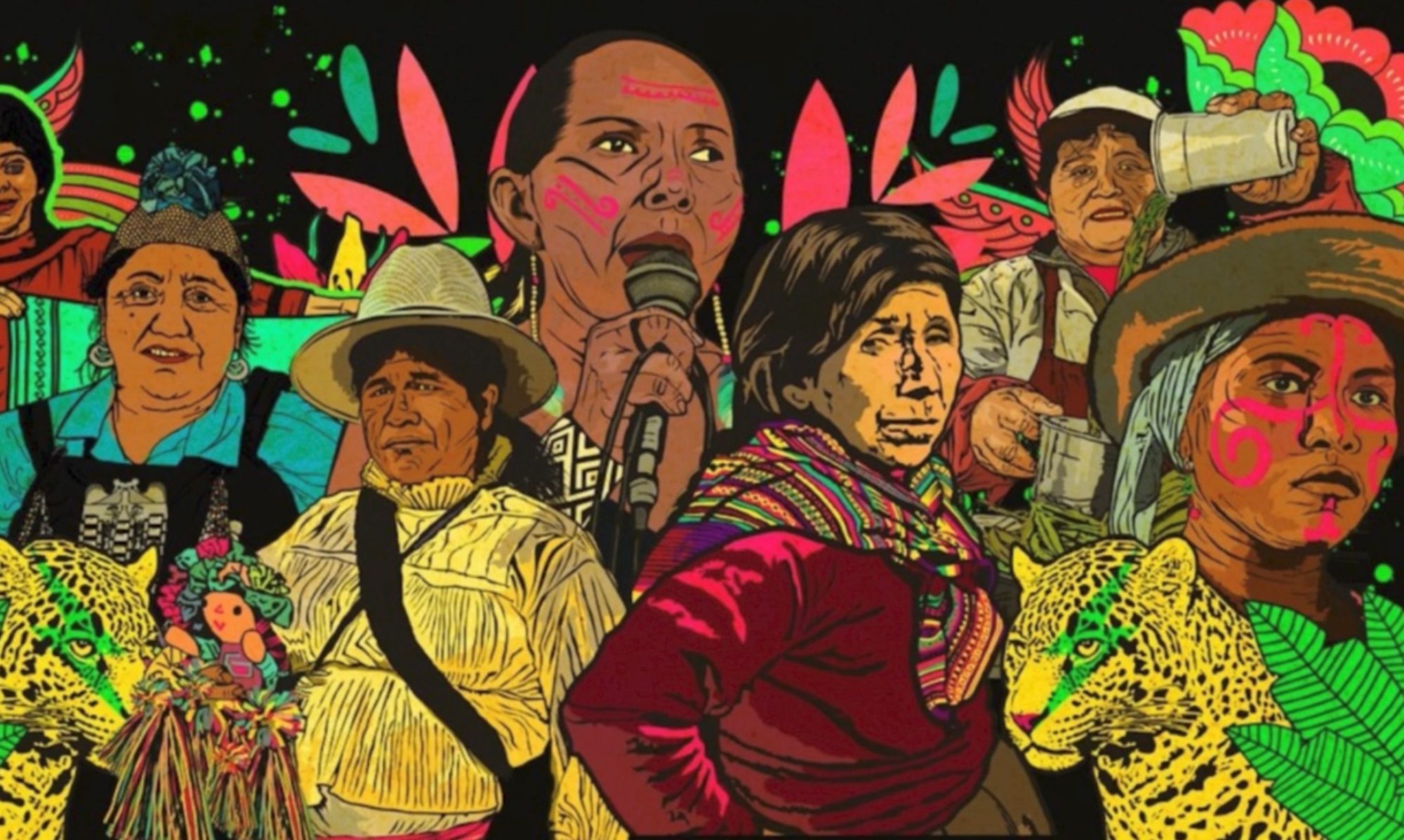Present Mirrors the Past
by Isabella Diaz
Please read the crafter statement before watching the video essay. Thank you.
Brazil as well as a lot of Latin America love telenovelas. A theme prominent in telenovelas is social class. It is a very clear trend on the screen to see the protagonists always blue eyed, blond haired, and the side characters such as the servants or the villains are always people of color, whether from indigenous or black races, and ethnic features such as mine, brown skin, dark hair, and dark eyes. Growing up, I recognize the only people to ever look like me on the telenovelas were the servants. On campus, I can’t help, but observe that the majority of people who look like me are the workers doing cleaning maintenance, and not really the academic staff or students. Looking back into history, black and indigenous people were forced into slavery under the encomienda system. The people who were domestic house slaves in the past are the same people who continue to be house servants today. People of color, throughout history, continue to suffer from a cycle of oppression that continues to be normalized. Not only is the treatment of black and indigenous people normalized, but it is also perpetuated on the screen by forcing black and indigenous people into only being characters such as house servants.
However, recently, in Brazil, there has been a social movement pushing for the reformation of the treatment of domestic servants in Brazil. The issues highlighted throughout this movement have also been highlighted in the film, “Que Horas Ela Volta.”
“Que Horas Ela Volta,” focuses on the domestic house servant Val, a woman of darker complexion, who serves the family of Dr. Carlos and Barbara, a white family who has inherited wealth. The film’s camera mainly centers on Val in her sleeping quarters. In Brazil, the sleeping quarters for domestic servants are known as quarto de empregada which is translated to maid’s room, a room the size of a cupboard. A darkly lit corridor downstairs leads to Val’s quarto de empregada and in contrast open, brightly lit spaces upstairs leads to the dorms of the wealthy family. Even though Dr. Carlos and Barbara have a nice guest room to spare Barbara, they choose to force her into the quarto de empregada. Even though Val is treated with a lot of respect and cordiality from the family, Val is clearly always an employee first, and specifically a woman of color first, to the white family. Dr. Carlos and Barbara’s family live on the top level of the household while Val lives on the bottom floor. This housing represents a model that mimics the racial hierarchy that exists in Brazil, where white people are the ones mostly at the top when it comes to wealth and social class, while people of color tend to be mostly at the bottom. This is further magnified through the racial housing segregation that exists in Brazil, people of color live in favelas and white people live in mansions. This imitates Brazil in the past with the segregation of people in slave quarters and the homes for white people.
Another dynamic that reveals the treatment of domestic workers is the dynamic between Val and her daughter Jessica. Val has never taken an active role in being Jessica’s mother since Val left Jessica at a young age to be a nanny to Fabinho, the son of Dr. Carlos and Barbara. When Jessica returns into Val’s life, they have to grow a dynamic of mother and daughter that did not exist before. Something I noticed about every one of their interactions was Val always correcting Jessica’s behavior on how she is supposed to interact with Dr. Carlos and Barbara’s family. Val will frown on Jessica for asking questions or being outspoken to the family. Val was reprimanded for asking to use the guest room upon her arrival to the home instead of being crammed into her mother’s quarto de empregada. Even Jessica eating some of Fabinho’s favorite ice cream became a huge big deal in the household. Val would tell Jessica that she can’t eat that ice cream because that is for Fabinho and we have our own for us servants. In one scene, Barbara is seen giving Jessica a dirty look of disapproval for eating a spoon of Fabinho’s ice cream, too. In another scene, Barbara hires people to get rid of the whole pool because she saw a rat swimming in it, but in reality she was referring to Jessica. Val first reprimanded Jessica for swimming in the pool that only belongs to Dr. Carlos and Barbara, but Barbara was the one who further escalated such a miniscule problem. To anyone else, none of these things look like a big deal, but to Val and Barbara, these are deals that violate the dynamic that is supposed to exist between employer and servant. Val and in extension Jessica are not entitled to things such as nice ice cream, nice rooms, or a beautiful pool while the wealthy white family are entitled to these things. Val doesn’t even question these things, if anything, she passes these social standards onto her daughter, the next generation of Brazil. These social standards have existed since the introduction of the encomienda system and have been passed down through for generations. They have been imprinted onto Brazilian society resulting in it becoming normalized. Val has it ingrained into herself to be beneath Dr. Carlos and Barbara not only because of her occupation, but also because of her complexion.
Works Cited
- CNN, Cable News Network, 29 Apr. 2013.
- Latina, The Passionate. “The Legacies of Slavery.” The Passionate Latina, 12 Oct. 2020.
- Randall, Rachel. Full Article: Cordiality and Intimacy in Contemporary Brazilian Culture.
- Santos, Barbara. “New Film Sheds Light on How Domestic Work in Brazil Res.” VOA, Voice of America (VOA News), 8 July 2020.
